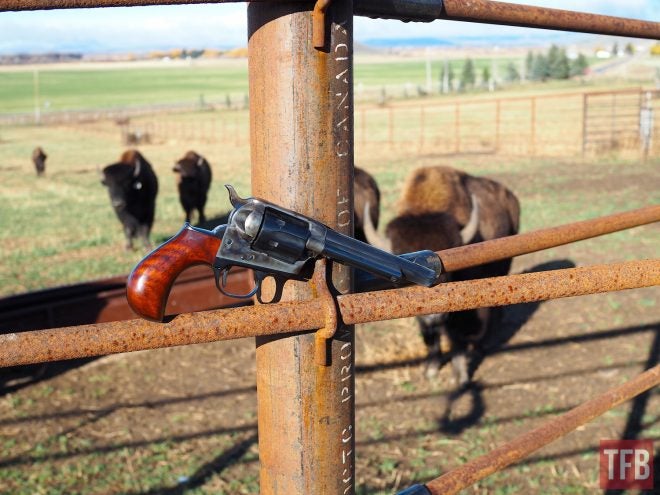Firearms with small, sweeping grips have been around for quite some time. While the distinctive “Bird’s Head” grip is normally attributed to Colt Derringers of the 1860s, a look at a Barbar pocket flintlock pistol from 1740 shows a very similarly shaped stock. Nevertheless, Samuel Colt, after the rather unusual shape of his First Model (or No.1) Derringer, started making derringers with the distinctive “Bird’s Head” grip.
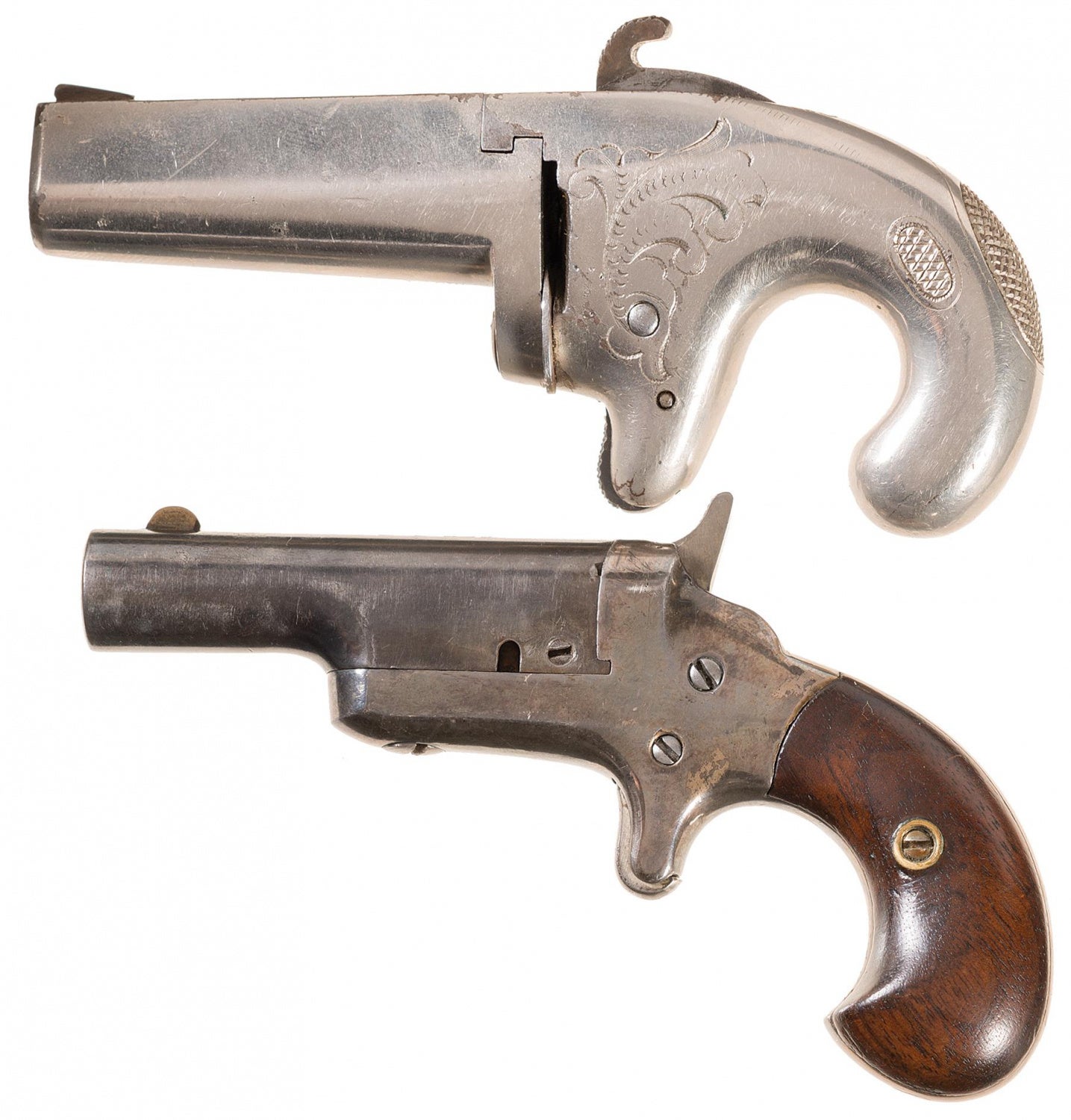
Top: Colt Model 1 Derringer with its rather unique grip
Bottom: Colt Model 3 Derringer with bird’s head grip
Image Credit: Rock Island Auctions
The first revolver to come from Colt with a bird’s head grip was their Open Top Pocket model of 1871, followed by the “New Line” model, both in .22. Colt also produced the .41 caliber Colt “House Pistol”, with a unique, cloverleaf-shaped four-chamber cylinder, also with a bird’s head grip. By 1877, when Colt double actions like the M1877 and M1878 came out, bird’s head grips were standard on those models. Other bird’s heads of the era were the Ethan Allen’s Pocket Revolver of 1871, several Webleys including the Webley-Kaufmann, and the Smith & Wesson Model 1 Third Issue.
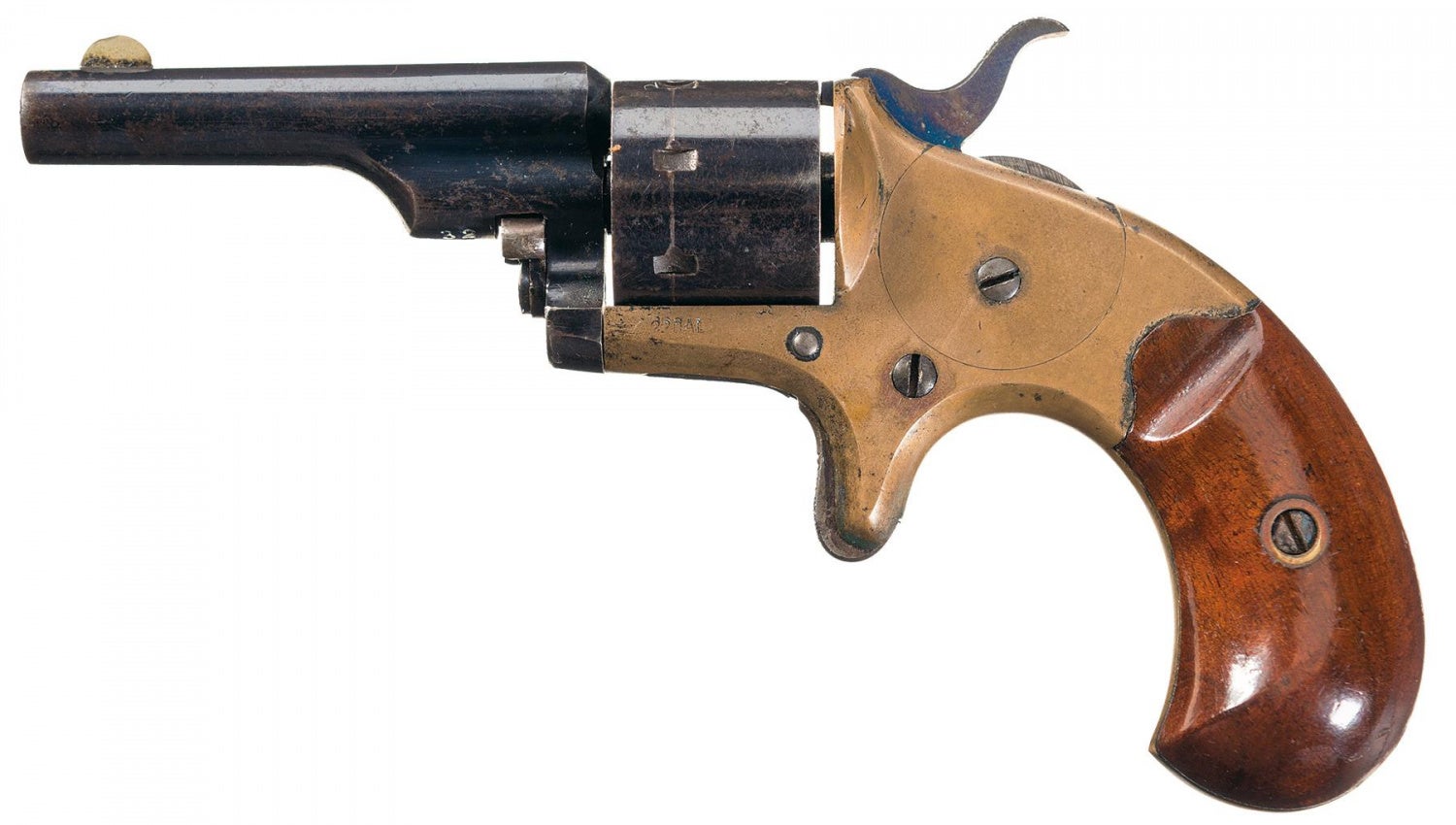
Colt’s 1st Bird’s Head revolver: Colt Open Top Pocket with Bird’s Head grip
Image Credit: Rock Island Auctions
Interestingly enough, though there are many modern 1873 Colt Single Action Army style reproductions from companies such as Uberti and EMF, the SAA was not originally offered with bird’s head grips.
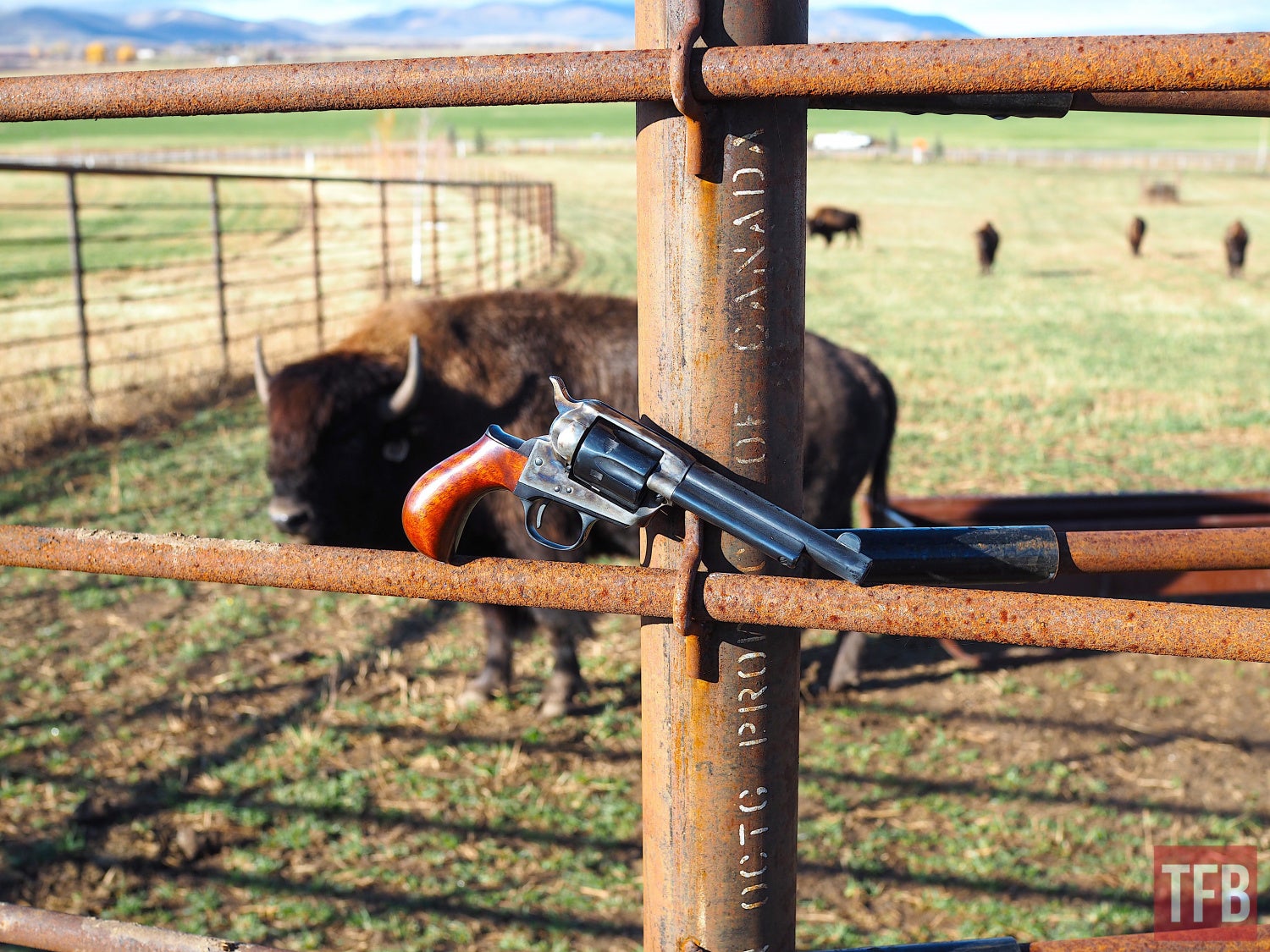
Uberti/Cimarron 1873 Birds Head
Why the Bird’s Head?
Bird’s head grip profiles lend themselves to more concealability than, say, a full-size “plow handle” grip. There is just enough grip material to hang onto for the average size hand. Were you an 1800’s card sharp, a pistol artfully concealed in a cummerbund or waistcoat might well be more comfortable if it had a compact bird’s head grip. Reduction of a pistol’s grip size was a major factor and easy way of increasing its concealability back then, just as it is today.
There are a few card tables in local museums out west where I live that have bullet holes with entries on the bottom and exits on the top of the table, and, given the years of the shootings, I imagine that the revolver was likely an 1877 or 1878 with a bird’s head that was involved in the deed.
Disadvantages of the bird’s head grip tend to be that they are usually a bit too small for a large or XL hand, much like the grip on a modern J-frame revolver. Personally, I find them too usually too small to get anything but one and a half fingers of my ham hands on.
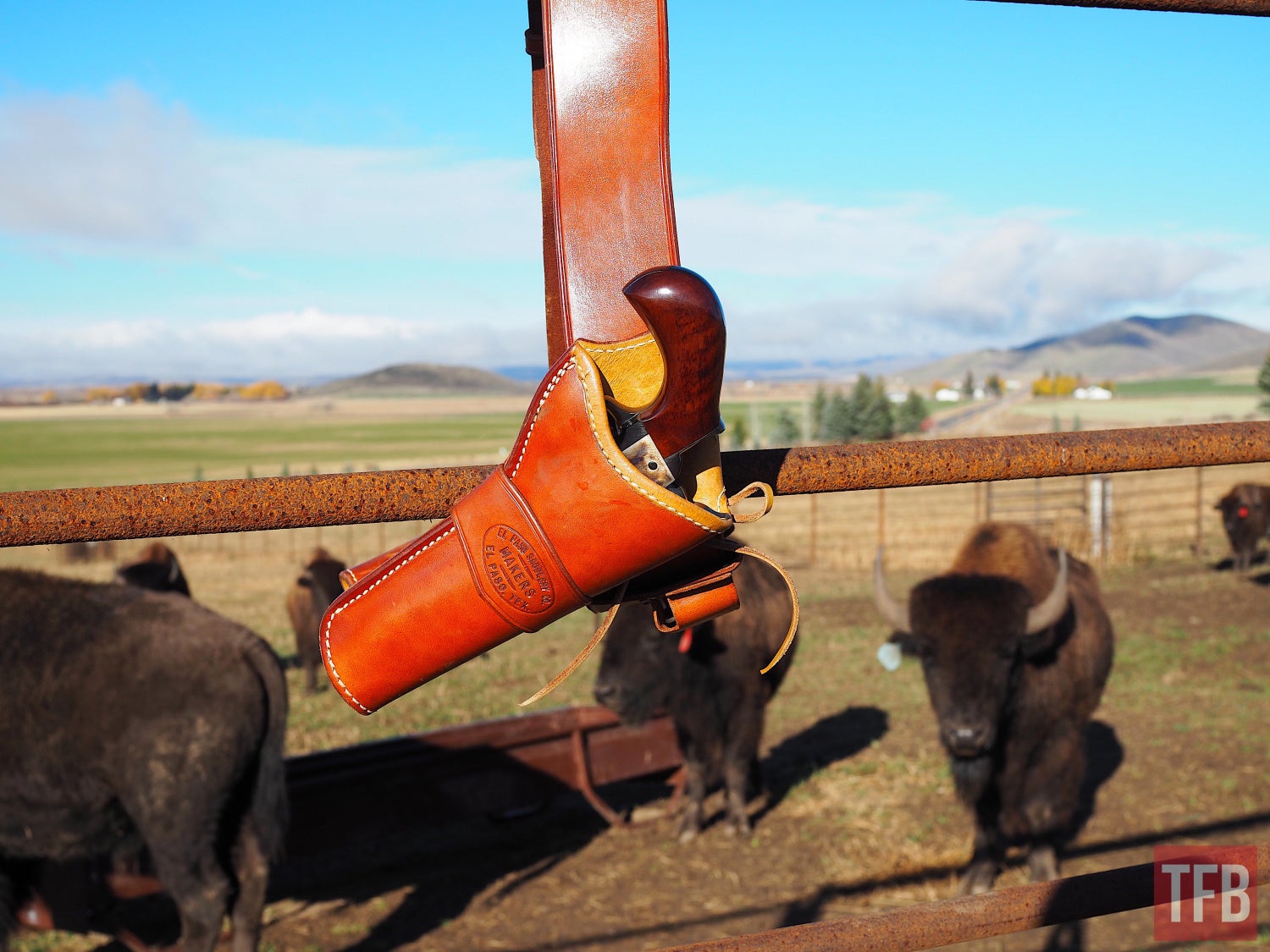
Wheelgun Wednesday – A Look at Bird’s Head Grips
Birds Head at the Range
I happen to have an Uberti/Cimarron M1873 in .38 Colt/S&W Special that I picked up for a song at a local auction. I take it out to the range occasionally, but not often, as I can’t quite get the best grip on it. Nevertheless, I am able to shoot a pretty damn decent group with it when shooting Black Hill’s extremely soft shooting 700fps HBWC loads. When shooting these loads, the revolver doesn’t rock back in my hand at all, even with the smooth, sweeping bird’s head.
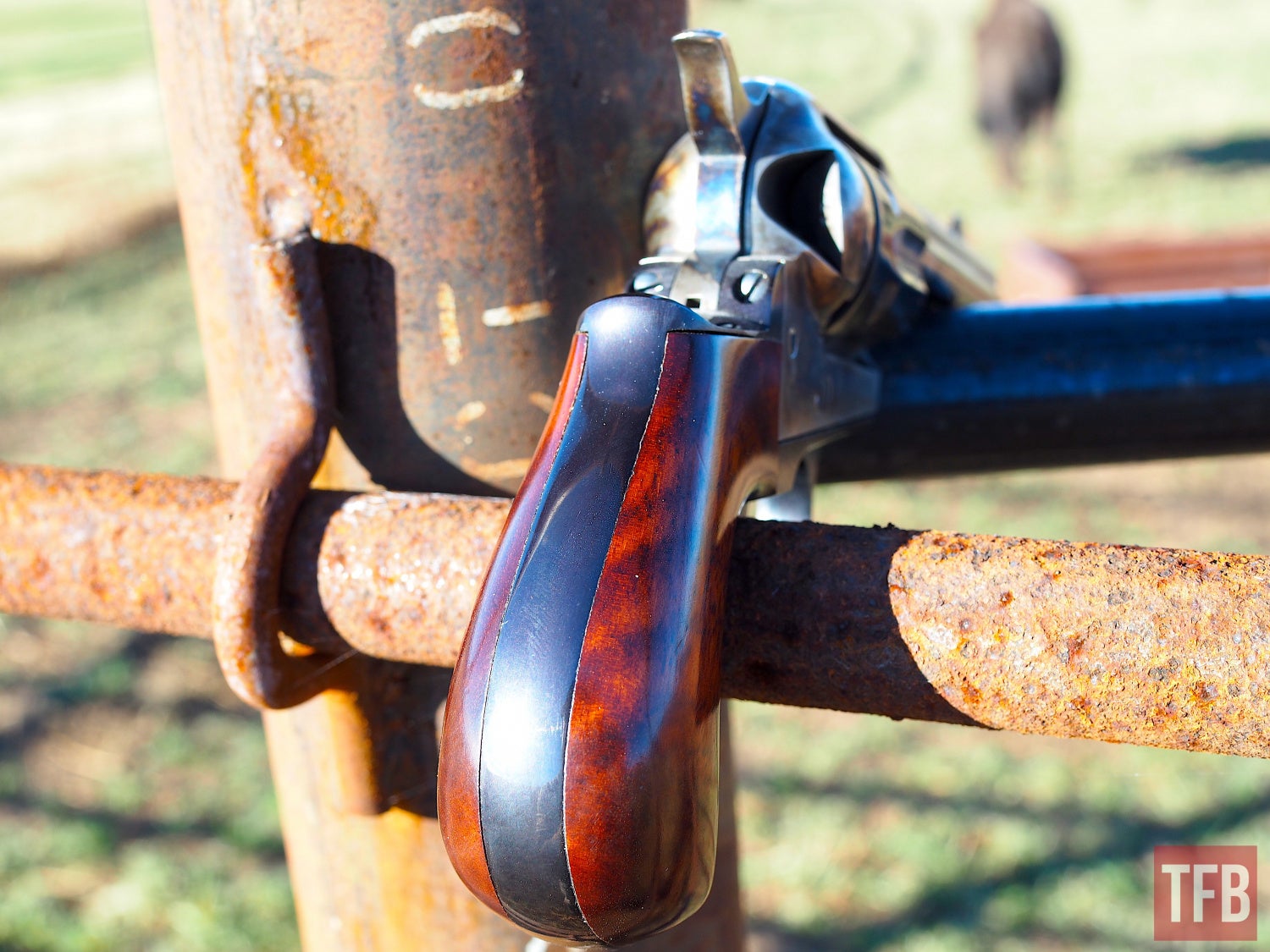
Wheelgun Wednesday – A Look at Bird’s Head Grips
A more potent .38 load requires one to adequately pressure the front and back of the grip. This will be easy for practiced revolver shooters, but I would not recommend a novice with larger hands start out with a bird’s head style grip, the same as I would not recommend them to start out with a J-frame. If one were to shoot powerful loads out of a bird’s head revolver quite often, I would recommend checkered, rubberized or leather wrapped grips, as opposed to smooth wood and metal.
While they were an interesting design aspect of the 18th and 19th century, there’s plenty of modern-produced bird’s head revolvers to choose from nowadays. Should you choose one for sport, pure aesthetics, or for self-defense, be sure to practice with it often. And remember: in a gunfight, a bird in the hand is worth two in the holster (I couldn’t resist).
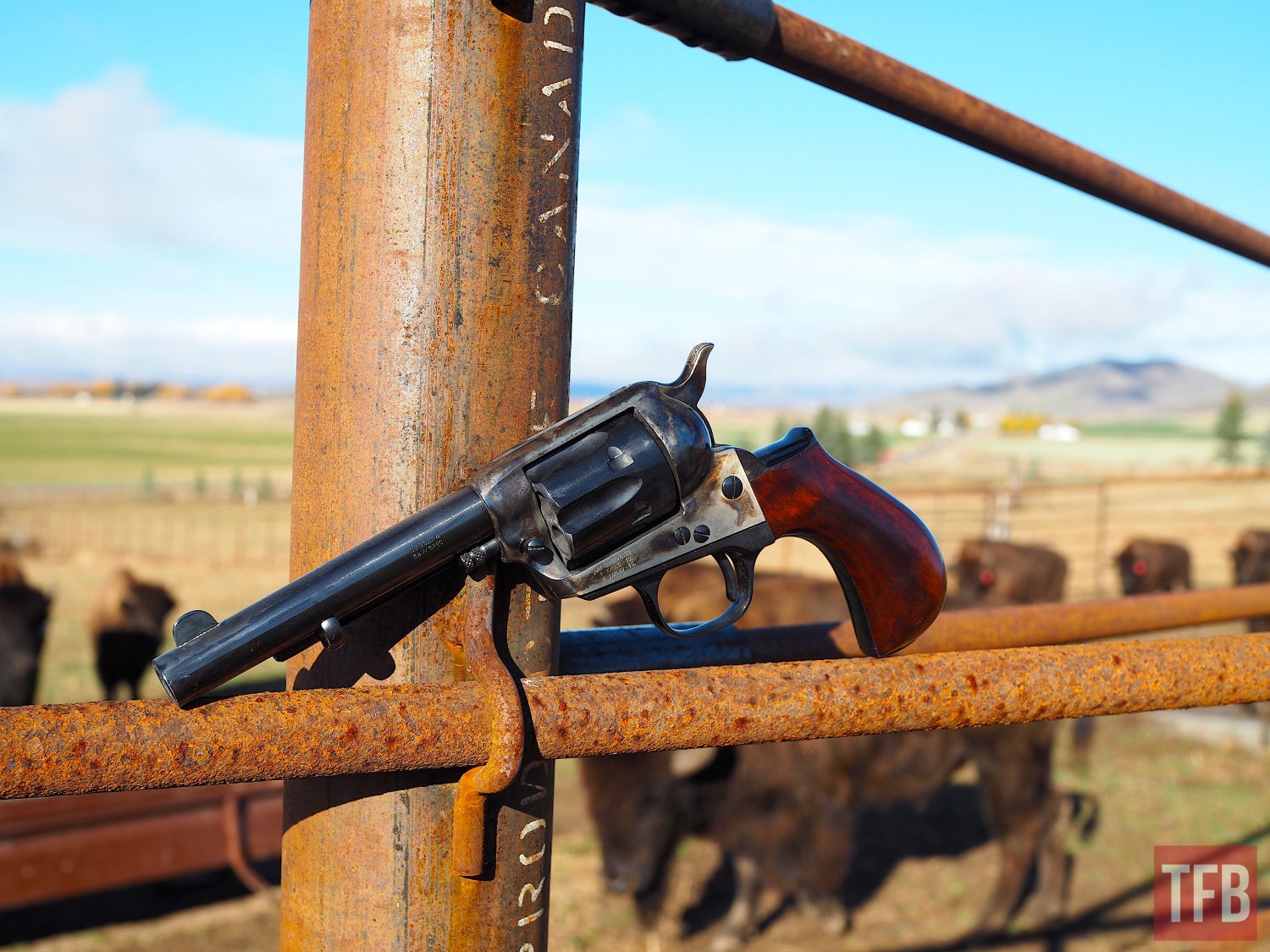
Wheelgun Wednesday – A Look at Bird’s Head Grips
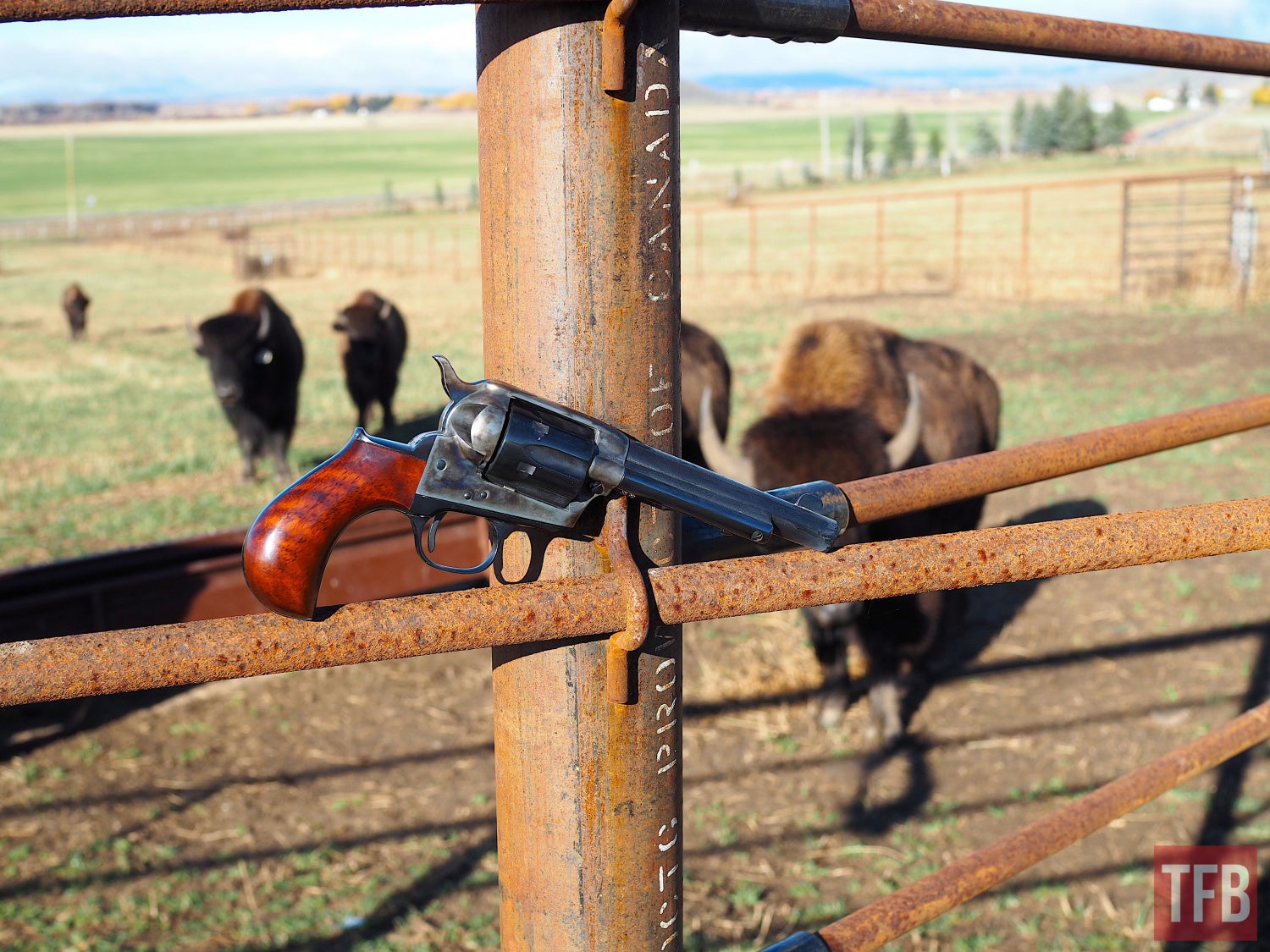
Wheelgun Wednesday – A Look at Bird’s Head Grips
 Your Privacy Choices
Your Privacy Choices